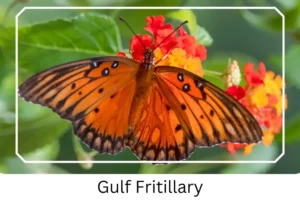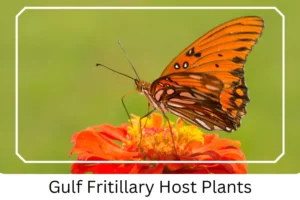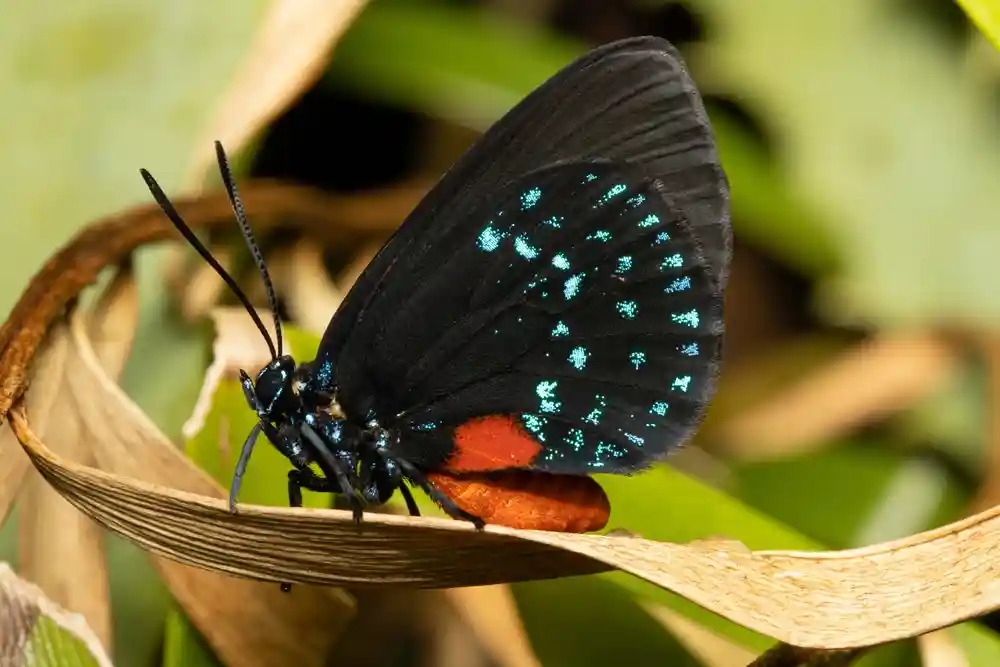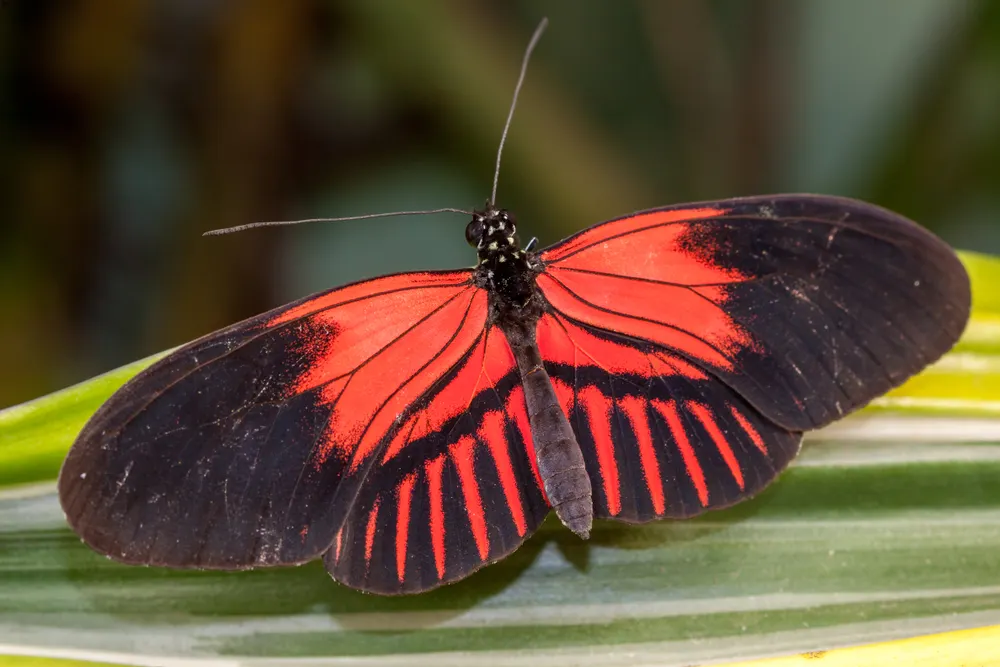Gulf Fritillary (Agraulis vanillae)
The Gulf Fritillary, scientifically known as Agraulis vanillae, is a remarkable butterfly that captivates with its vivid orange hues and unique lifecycle. Renowned for its stunning appearance and fascinating biology, this species offers an intriguing glimpse into the world of butterflies, making it a subject of interest not only for lepidopterists but also for nature enthusiasts.
Scientific Classification
- Family: Nymphalidae
- Genus: Agraulis
- Scientific Name: Agraulis vanillae
Overview
Thriving in the warmth of the southern United States, particularly in Florida and Texas, the Gulf Fritillary embarks on a captivating journey through life, from a strikingly colored caterpillar to a beautifully patterned adult butterfly. Its lifecycle, characterized by distinctive stages of development, is a testament to nature’s intricacies. This guide delves into the descriptive and identification details of each stage, alongside providing insightful quick facts and tips on how to identify this species, enriching your knowledge about the Gulf Fritillary.
Description and Identification
Caterpillar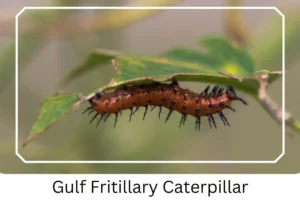
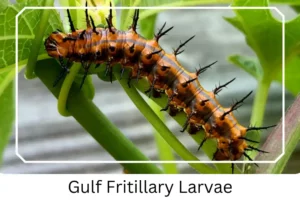
The Gulf Fritillary caterpillar is an eye-catching spectacle, adorned with a bright orange body and black spines. These spines, while menacing in appearance, are harmless to humans. The caterpillar stage lasts approximately 11 to 16 days, varying with environmental temperatures. What’s remarkable about these larvae is their toxic nature, a defense mechanism that deters predators, ensuring their survival through to metamorphosis.
Pupa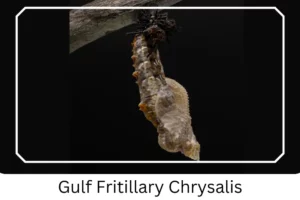

Transforming into a chrysalis, the pupa exhibits a light to mottled brown hue with subtle gray markings, blending seamlessly into the surrounding foliage. This camouflage is crucial for its survival during the 7 to 12 days before emerging as an adult butterfly.
Adult Butterfly
Sexual Dimorphism: Adult Gulf Fritillaries display slight variations between males and females, with females typically showcasing darker and more pronounced markings.
Color and Appearance: Upon spreading their wings, the adults reveal a mesmerizing bright orange color, adorned with black markings and three distinctive white spots rimmed in black. The underside of the wings presents a contrast with its brownish color and silvery-white spots, a beautiful sight whether the wings are open or closed.
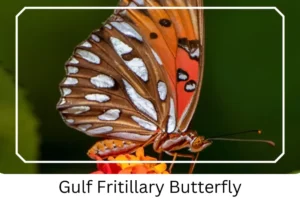
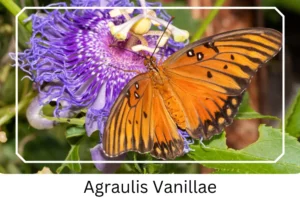 Average Wingspan: The wingspan of an adult Gulf Fritillary ranges from 65 to 95 mm (2.55 – 3.74 in), showcasing the species’ medium to large size.
Average Wingspan: The wingspan of an adult Gulf Fritillary ranges from 65 to 95 mm (2.55 – 3.74 in), showcasing the species’ medium to large size.
Flight Pattern: These butterflies are known for their medium to fast flight pace, darting and gliding among flowers with grace.
Eggs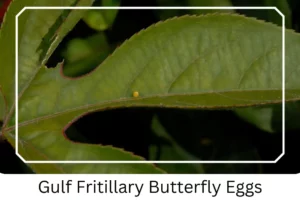
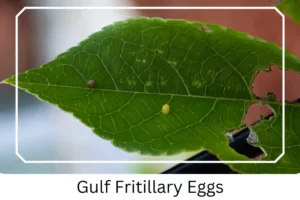
The egg-laying process of the Gulf Fritillary involves the deposition of small, spherical, yellow butterfly eggs on or near the leaves of host plants, ensuring the next generation’s growth and survival.
Quick Facts | |
| Distribution | Predominantly found in the southern U.S., extending through Mexico. |
| Habitat | Prefers open, sunny areas near grasslands, parks, and woodlands. |
| Lifespan of Adults | Lives for 14 to 27 days, depending on environmental factors. |
| Host Plants | Favors passion vine and passion flower species for laying eggs. |
| Adult Diet | Enjoys nectar from flowers such as zinnia, aster, thistle, verbena, lantana, and butterfly bush. |
How to Identify Gulf Fritillary Butterfly?
Identifying the Gulf Fritillary butterfly can be a delightful endeavor, thanks to its distinctive features. Look for medium-sized, vibrant orange butterflies with elongated forewings, a hallmark of the species. The dorsal side of the wings showcases a bright orange backdrop with black markings and white spots, while the underside is a muted brown with silvery spots. The size difference between males and females, with males being slightly smaller, and the unique pattern on their wings, makes identification easier. Observing these characteristics in open, sunny habitats can lead to successful identification of this captivating butterfly.
Did You Know?
- The Gulf Fritillary utilizes a unique defense mechanism against predators by emitting an unpleasant odor from chemicals released when threatened.
- Despite their spiny appearance, the caterpillars are harmless to humans, with their bright coloration serving as a warning to potential predators about their toxicity.
- This species undergoes two significant migrations annually, in the spring and fall, showcasing their remarkable adaptability and resilience.
Conclusion
The Gulf Fritillary butterfly is a vibrant testament to nature’s beauty and complexity. From its early days as a brightly colored caterpillar to its transformation into a stunning adult butterfly, each stage of its life is filled with interesting facts and unique characteristics that make it a fascinating subject of study. Whether you’re a seasoned entomologist or a curious nature lover, the Gulf Fritillary offers a glimpse into the intricate dance of survival and beauty in the natural world.

